Are you experiencing dry and flaky scalp during winter? Due to harsh weather conditions, this is a common problem for many people.
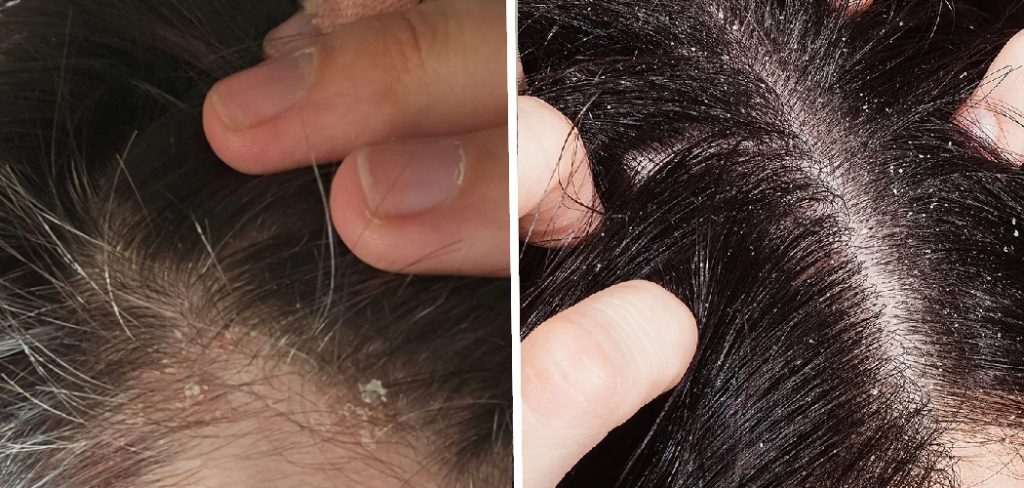
As the winter season sets in, many people experience the discomfort of dry scalp. Cold weather, low humidity levels, and indoor heating can all contribute to this issue. If left untreated, dry scalp can lead to itching, flakiness, and even hair breakage. However, there are effective remedies and preventive measures you can take to restore moisture and maintain a healthy scalp during the winter months.
In this article on how to fix dry scalp in winter, we will explore simple yet effective solutions to fix dry scalp and keep your hair and scalp nourished and hydrated throughout the winter season. Say goodbye to dryness and hello to a happy, healthy scalp!
What Are the Causes of Dry Scalp in Winter?
Before we dive into the solutions, it’s essential to understand what causes dry scalp during winter. As mentioned earlier, cold weather, low humidity levels, and indoor heating are some of the main contributors to dryness. Let’s take a closer look at each of these factors:
- Cold Weather: During winter, the temperature drops significantly, affecting our skin and scalp. The colder air strips away natural oils from our skin and scalp, leaving them dry and flaky.
- Low Humidity Levels: Dry air lacks moisture, which can lead to dry skin and scalp. This is especially common in areas with frigid temperatures.
- Indoor Heating: Most people use indoor heating systems to stay warm during winter. However, these heating systems can dry out the air in our homes and offices, which can also contribute to dry scalps.
Apart from external factors, certain internal factors can also cause or worsen dry scalp during winter. These include:
- Dehydration: During winter, we tend to drink less water than during warmer months. This can lead to dehydration, which affects the moisture levels of our skin and scalp.
- Poor Diet: Our diet plays a significant role in maintaining healthy hair and scalp. During winter, we may consume more comfort foods that lack essential nutrients for hair health.
- Stress: The holiday season and shorter daylight hours can cause stress and impact our scalp’s health.
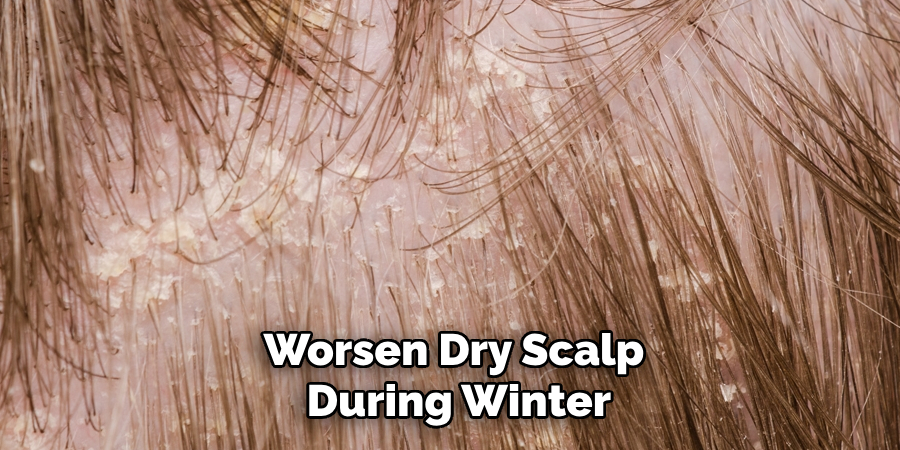
Now that we understand the causes of dry scalp in winter, let’s discuss how to fix and prevent it.
What Will You Need?
Before we get started, it’s helpful to have the following items on hand:
- A mild and moisturizing shampoo
- A deep-conditioning hair mask or oil treatment
- A scalp exfoliating brush or a soft-bristled brush
- Essential oils like tea tree, coconut, or almond oil
Once you have these items, you can treat your dry scalp and restore moisture.
10 Easy Steps on How to Fix Dry Scalp in Winter
Step 1. Use a Mild Shampoo:
Opt for a mild shampoo specifically designed for dry scalp or sensitive skin. Harsh shampoos can strip away natural oils and exacerbate dryness. Look for sulfate, fragrance-free products that contain moisturizing ingredients like aloe vera or glycerin. Gently massage the shampoo into your scalp, focusing on the roots, and rinse thoroughly with lukewarm water. Avoid using hot water, as it can further dry out your scalp. Remember, less is more when it comes to shampooing – aim for every other day or a few times a week to prevent over-washing and drying out your scalp.
Step 2. Deep Condition Your Hair:
After shampooing, apply a deep conditioning hair mask or oil treatment to your hair and scalp. These products contain nourishing ingredients that can help restore moisture to your dry scalp. Leave the conditioner on for 10-15 minutes before rinsing it off with lukewarm water. If using an oil treatment, you can leave it on overnight for maximum benefits.
Step 3. Exfoliate Your Scalp:
Using a scalp exfoliating brush or a soft-bristled brush, gently exfoliate your scalp to remove dead skin cells and flakes. This process can improve blood circulation and create a healthy environment for hair growth. Be sure to use light, circular motions to avoid irritating your scalp further. You can do this step once or twice a week, but avoid over-exfoliating, as it may lead to more dryness or sensitivity. Pair this step with an exfoliating scalp scrub if desired, but choose a gentle formula that suits your scalp’s needs.
Step 4. Ditch the Heat Styling Tools:
Excessive use of heat-styling tools like blow dryers, flat irons, and curling irons can further dry out your scalp and weaken your hair. Try to minimize their use during winter to give your scalp a chance to recover its natural moisture levels. If you must use heat styling tools, apply a heat protectant spray beforehand and keep the temperature setting as low as possible. Opt for air-drying your hair or using the cool setting on your blow dryer to reduce damage.
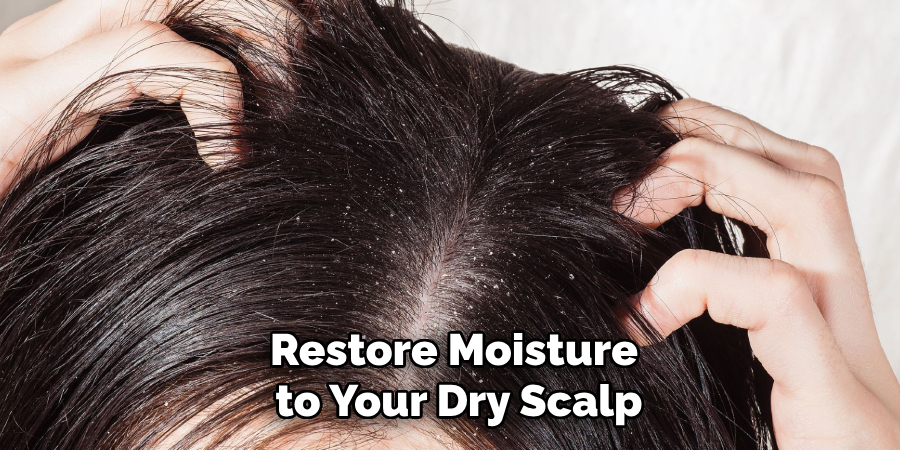
Step 5. Stay Hydrated:
Hydration starts from the inside, so ensure you drink enough water throughout the day. Even though it’s easy to forget hydration during the colder months, your body (and scalp) still requires adequate moisture. Aim to drink at least eight glasses of water daily or more if you’re engaging in physical activity. You can also increase your water intake by consuming hydrating foods such as fruits and vegetables, which are rich in water content and vital nutrients.
Step 6. Add Essential Oils to Your Routine:
Essential oils such as tea tree, coconut, or almond oil can work wonders for a dry scalp. These oils have moisturizing and soothing properties that help combat dryness and irritation. Use a small amount of oil to massage your scalp a few times a week, leaving it on for at least 30 minutes (or overnight if possible) before washing it out. For best results, warm the oil slightly before application to allow better absorption. Mixing essential oils with carrier oils like jojoba oil can also enhance the treatment of added hydration.
Step 7. Use a Humidifier at Home:
Indoor heating may keep you warm, but it can also dry the air in your home or office. Invest in a humidifier to add moisture back into the air to counteract this. Placing a humidifier in your bedroom while you sleep can be particularly helpful, as it keeps your skin and scalp hydrated overnight. Be sure to clean the humidifier regularly to avoid the growth of mold or bacteria.
Step 8. Protect Your Scalp With a Hat or Scarf:
When heading outdoors in winter, wear a hat or scarf to protect your scalp from the harsh cold. Choose soft and breathable materials, such as cotton or fleece, to avoid causing irritation or friction to your scalp. Avoid hats made of wool or synthetic fibers unless lined with a softer material, as they can sometimes worsen dryness or cause discomfort.
Step 9. Maintain a Balanced Diet:
Your diet plays a crucial role in the overall health of your scalp and hair. To nourish your scalp from the inside out, include foods rich in omega-3 fatty acids, vitamins A, E, and D, as well as zinc and iron. Fatty fish, nuts, seeds, leafy greens, and whole grains are excellent options for your meals. Avoid excessive sugary and processed foods, as they can contribute to inflammation and dryness.
Step 10. Avoid Overwashing Your Hair:
While it may seem counterintuitive, washing your hair too often can strip your scalp of its natural oils, leading to increased dryness and irritation. Limit your hair-washing routine to two or three times a week, depending on your hair type and lifestyle. When you wash your hair, always opt for lukewarm water and use a gentle, hydrating shampoo free from harsh ingredients like sulfates and parabens.
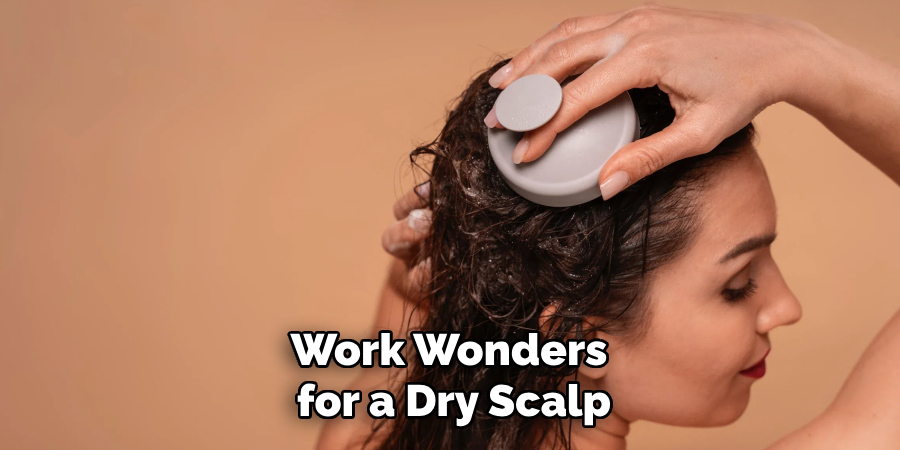
By following these steps and making a few adjustments to your routine, you can effectively combat dry scalp during winter and maintain a healthy, nourished scalp all season long.
5 Things You Should Avoid
- Using Hot Water: While a hot shower may feel comforting in cold weather, the heat can strip away moisture from the scalp. Opt for lukewarm water when washing your hair to prevent further drying.
- Using Harsh Hair Care Products: Avoid hair care products that contain harsh chemicals, alcohol, or sulfates, as they can contribute to scalp dryness. Look for gentle, hydrating products specifically designed for dry scalps.
- Excessive Heat Styling: Heat-styling tools like hairdryers, straighteners, and curling irons can further dry the scalp. Minimize their use or use them on low heat settings to reduce the potential for moisture loss.
- Ignoring Scalp Hydration: While focusing on the hair, it’s important not to neglect the scalp. To keep it nourished and moisturized, incorporate scalp treatments, moisturizing oils, or hydrating masks specifically formulated for the scalp.
- Don’t Scratch Your Scalp: It’s tempting to scratch an itchy scalp, but this can irritate and damage the already dry skin. Instead, use gentle scalp massages using nourishing oils to soothe discomfort.
Avoiding these practices can help alleviate dry scalp in winter and promote a healthier, more balanced scalp environment.
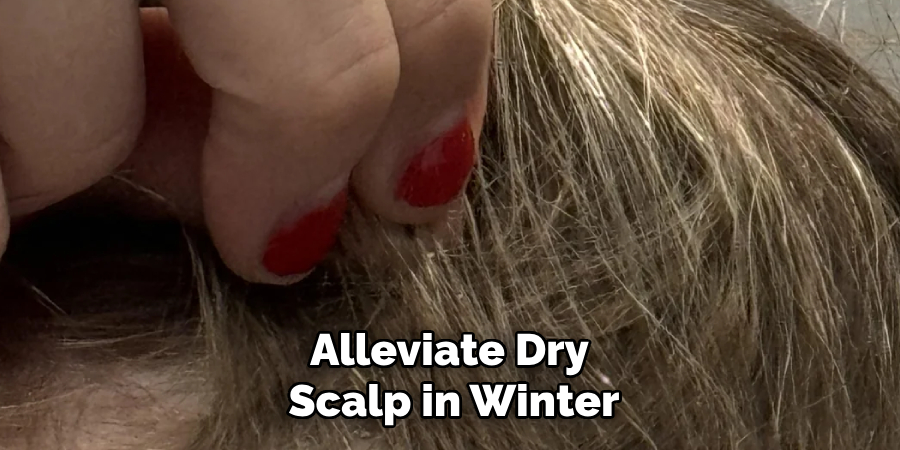
Conclusion
Remember always to be gentle and nourishing to your scalp during winter. Protecting and keeping it hydrated is essential, as it can quickly dry and irritate in the colder months.
With these tips, you can effectively combat dry scalp and maintain healthy hair throughout the winter season. Don’t let a dry scalp stop you from enjoying the winter weather! So, take care of your scalp and confidently embrace winter’s beauty.
Hopefully, the article on how to fix dry scalp in winter has been helpful and informative. Stay warm and hydrated! Happy winter!
About the Author
Jane Hubbard is a passionate beauty expert with a wealth of experience in makeup, hair, and overall beauty techniques. After years of working as a hairdresser specialist, she followed her entrepreneurial spirit and started her own consultancy business.
Jane has always been driven by her desire to help others feel confident in their own skin, and she does this by sharing her knowledge, experiences, and practical beauty tips. Through her consultancy, she empowers individuals to embrace their unique beauty, offering tailored guidance that boosts both self-esteem and personal style.
Professional Focus
- Specializes in makeup, hairstyling, and beauty consulting.
- Provides personalized beauty advice, tips, and techniques to help individuals feel confident in their appearance.
- Dedicated to staying up-to-date with the latest industry trends and developments.
- Passionate about creating a comfortable and empowering experience for every client.
Education History
- University of Craft and Design – Bachelor of Fine Arts (BFA) in Woodworking and Furniture Design
- Woodworking Apprenticeships – Extensive hands-on training with skilled craftsmen to refine carpentry and furniture making techniques
- Online Courses & Masterclasses – Continued education in advanced woodworking techniques, design principles, and specialized tools
Expertise:
- Makeup artistry, hairstyling, and beauty consulting.
- Personalized beauty techniques to enhance confidence and self-expression.
- Educating clients on how to maintain their beauty routines at home.
